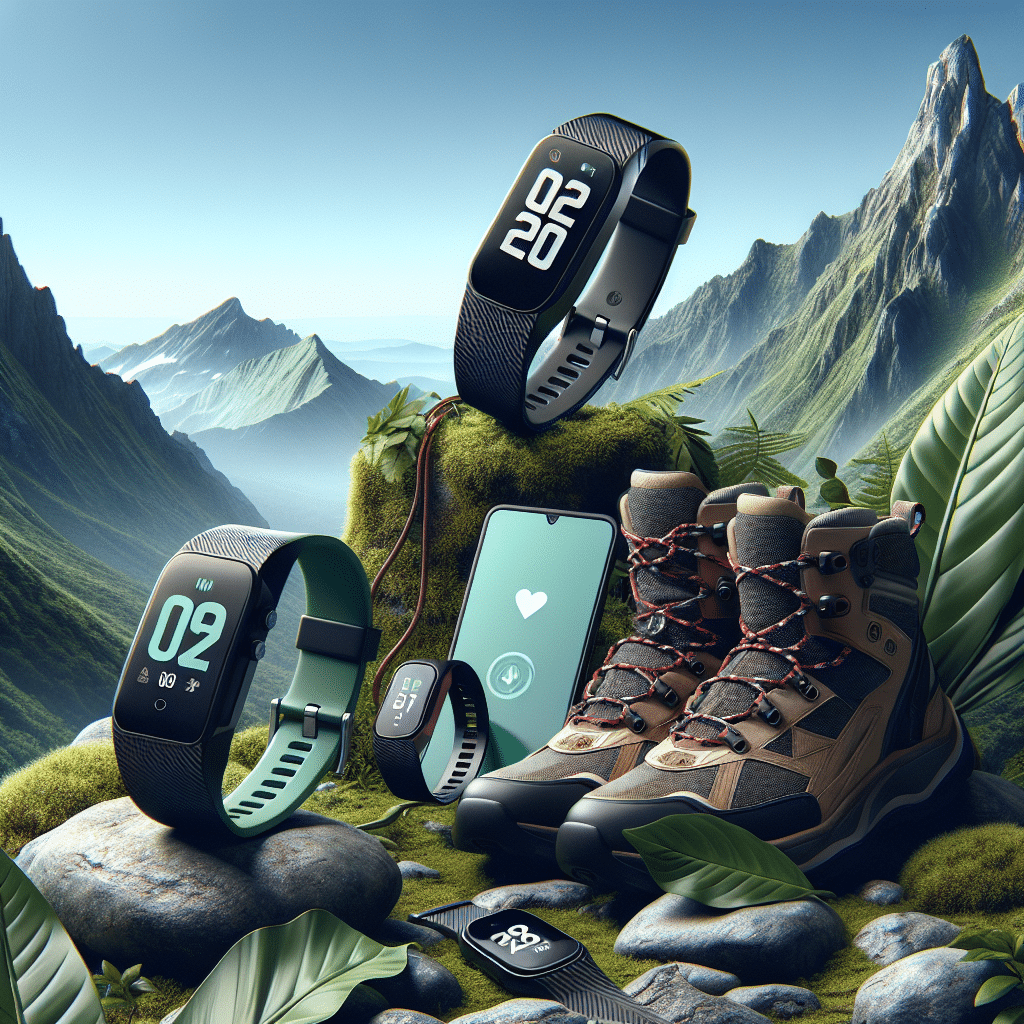Understanding Activity Trackers for Hiking and Outdoor Sports
1. What are Activity Trackers?
Activity trackers are wearable devices that monitor and record various physical activities, including hiking and outdoor sports. Equipped with advanced technology, these trackers provide information on distance traveled, elevation changes, heart rate, calories burned, and more. The integration of GPS and biometric sensors enhances their functionality, making them essential tools for outdoor enthusiasts.
2. Key Features to Consider
When selecting an activity tracker for hiking and outdoor sports, consider the following features:
a. GPS Functionality:
A built-in GPS is crucial for tracking your route, monitoring distance, and ensuring safety through real-time location data. High-quality trackers provide maps and route planning features.
b. Altimeter and Barometer:
For hikers, understanding elevation changes is vital. An altimeter measures altitude changes, while a barometer tracks weather conditions. These components are essential for assessing terrain and predicting weather shifts.
c. Heart Rate Monitoring:
Continuous heart rate tracking offers insights into overall fitness and helps optimize workouts. Many advanced trackers include features that analyze heart rate variability, aiding in tracking fitness levels over time.
d. Battery Life:
The battery life of your tracker should align with your hiking duration. Look for devices that offer a long-lasting battery, especially for multi-day hikes where access to charging stations is limited.
e. Water Resistance:
Outdoor sports can be unpredictable. A water-resistant tracker can withstand sudden rain or splashes, ensuring reliability in all weather conditions.
f. Compatibility and Syncing:
Choose a tracker that is compatible with your smartphone and other devices. Syncing with health applications provides a holistic view of your fitness data.
3. Top Activity Trackers for Outdoor Enthusiasts
a. Garmin Forerunner Series
Garmin’s Forerunner series, particularly the Forerunner 245 and 945, are popular among hikers. These devices feature advanced GPS tracking, heart rate monitoring, and elevation profiles. The ability to create custom routes and the long battery life make them a top choice.
b. Fitbit Charge 5
The Fitbit Charge 5 combines fitness tracking with smart features. It offers built-in GPS, an ECG app, and a daily readiness score to optimize your performance. Its sleek design and user-friendly interface make it a favorite among casual hikers.
c. Suunto 9 Baro
Designed for serious adventurers, the Suunto 9 Baro features a robust GPS system and barometric altitude measurement. Its sturdy construction and extended battery life make it ideal for prolonged outdoor activities. The ‘Intelligent Battery’ mode smartly optimizes battery usage based on your preferences.
d. Apple Watch Series 8
The Apple Watch Series 8 includes comprehensive health tracking features, an ECG app, and GPS capabilities. Although it is more of a smartwatch, its fitness-focused designs and compatibility with various apps make it suitable for casual hiking and outdoor sports.
e. Polar Grit X Pro
With military-grade durability, the Polar Grit X Pro offers advanced outdoor tracking features, including route navigation and fuel planning. Its combination of ruggedness and detailed metrics appeals to serious hikers and trail runners.
4. Benefits of Using Activity Trackers
a. Enhanced Safety:
GPS tracking allows you to share your location with friends or emergency services, providing peace of mind during isolated hikes. Many devices have safety features like ‘GroupTrack’ and ‘Incident Detection.’
b. Performance Insights:
Activity trackers offer detailed analyses of your workouts. Metrics like pace, elevation gain, and recovery times help you understand your capabilities and improve your performance over time.
c. Motivation and Goal Setting:
Setting goals is a fundamental aspect of fitness, and activity trackers help in this area by tracking your progress and achievements. The ability to sync with social media platforms encourages friendly competition and ongoing motivation.
d. Health Monitoring:
Continual heart rate monitoring and other health metrics facilitate better lifestyle choices. Many trackers alert users to potential health issues, encouraging proactive measures.
e. Customization and Personalization:
Users can customize settings for notifications, workouts, and health prompts. This personalization caters to individual preferences, making the experience unique for each user.
5. Tips for Maximizing Your Tracker Experience
a. Regular Syncing:
Sync your activity tracker regularly with your smartphone or computer to keep data updated and maximize the features of connected apps.
b. Update Software:
Ensure that your tracker’s software is up to date for optimal performance and access to the latest features and bug fixes.
c. Experiment with Settings:
Explore different settings to tailor the tracker to your specific needs. Adjustments in screen brightness, notification preferences, and workout modes can enhance usability.
d. Create Challenges:
Engaging in challenges with friends encourages consistency and accountability. Most trackers offer community features that allow users to join existing groups or create their own.
e. Review Metrics Post-Activity:
After a hike, take the time to review your metrics. Understanding your performance can inspire adjustments in your future outdoor training regime.
6. Disadvantages and Limitations
a. Battery Dependency:
While battery life has improved in many models, reliance on electronic devices poses risks if the tracker runs out of power during a critical moment.
b. Data Accuracy Variability:
Not all trackers provide consistently accurate data. Environmental factors, such as tree cover or weather conditions, can affect GPS and heart rate accuracy.
c. Durability Concerns:
Despite being built for outdoor use, some trackers may not withstand extreme conditions. Research user reviews regarding durability in demanding environments.
d. Cost Considerations:
High-end trackers can be expensive, leading potential buyers to compare the features carefully to ensure they meet their specific needs.
7. Conclusion: Future Trends in Activity Tracking
As technology advances, the future of activity trackers for hiking and outdoor sports will likely include enhanced biometric sensors, improved GPS capabilities, and more seamless integrations with other tech devices. Wearable technology may also focus on sustainability, employing eco-friendly materials to appeal to environmentally conscious consumers.
Stay informed on the latest models, innovations, and user experiences. Finding the ideal activity tracker can transform your hiking experience, allowing you to push your limits, stay safe, and truly enjoy the great outdoors.
